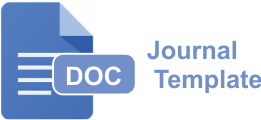Improving Students' Ability to Write Descriptive Text By Using Numbered Heads Together (NHT)
DOI:
https://doi.org/10.32529/beej.v1i1.538Abstract
The purpose of this research is to determine whether using Numbered Heads Together (NHT) can improve students’ ability to write descriptive texts at SMPN 6 Toili Barat. This research uses quasi-experimental research that requires a post-test for both groups. The research population was eighth grade students of SMP 6 Toili Barat. The sample of this research was class VIII A as an experimental class and consisted of 26 students while class VIII B was a control class and consisted of 27 students. The test consisted of pre-test and post-test. Data were analyzed statistically. After being analyzed, the result of t-counted was 6,744 with a degree of freedom 51, and a significance level of 0,05, t-table was 1,675. Therefore, the t-test result is higher than the t-table. It means that the hypothesis of this research can be accepted. The result showed that there was a significant influence in using Numbered Heads Together to improve students’ writing abilities in descriptive text in eighth grade at SMPN 6 Toili Barat
Keywords:Improving; Writing; Descriptive Text; NHT.References
Anderson, M. and A. (2003). Text Types in English 1-2. Australia: Macmillan Education.
Buscemi, S. V. (1990). A Reader for Developing Writers. New York: McGraw-Hill Companies, Inc.
Anderson, M. and A. (2003). Text Types in English 1-2. Australia: Macmillan Education.
Buscemi, S. V. (1990). A Reader for Developing Writers. New York: McGraw-Hill Companies, Inc.
Hamp-Lyons, L., & Heasly, B. (2006). Study Writing: A course in Writing Skills for Academic Purposes. 2nd ed, 6th print. Cambridge: Cambridge University Press.
Harmer, J. (2001). The Practice of English Language Teaching, 3rd Ed. New York: Pearson Education Limited.
Harmer, J. (2004). How to Teach Writing: Effective Sentence, Paragraph, and Essay. New York: Longman.
Ibrahim, dkk. (2002). Pembelajaran Kooperatif. Surabaya: Unesa University Press.
Jacobs, H. L., et.al. (1981). Testing ESL Composition: A Practical Approach. Rowley, MA: Newbury House.
Kagan, S. (1993). Cooperative Learning. San Juan Capistrano: Kagan Cooperative Learning.
Lie, A. (2002). Cooperative Learning in the Class Room. Jakarta: Gramedia Widiasarana.
Peha, S. (2010). The writing Teacher’s Strategy guide. Retrieved May 19, 2019, from http://www.ttms.org.
Slavin, R. E. (1995). Cooperative Learning (Theory, Research, and Practice). Boston: Allyn and Bacon.
Stone, H., & Sidel, J. L. (2004). Sensory Evaluation Practices third edition. Redwood City, California, USA: Elsevier Academic Press.
Sugiyono. (2011). Metode Penelitian Kuantitatif Kualitatif dan RD. Bandung: Alfabeta.
Sugiyono. (2013). Metode Penelitian Kuantitatif Kualitatif dan RD. Bandung: Alfabeta.



